I Mestieri nel Borgo – part 2 Posted by Serena on Sep 21, 2011 in Culture, Italian Language
I Mestieri nel Borgo, rievocazione storica della vita quotidiana di una piccola comunità contadina della Lunigiana = Trades in the village, historic re-enactment of the daily life of a small peasant farmer community in Lunigiana.
Let’s continue our photo documentary of this year’s festival in Ponticello, Lunigiana:
1. La Cottura nei Testi – 1 = Cooking in Iron Skillets – 1
Il testo è la teglia in ghisa tradizionale della Lunigiana, in cui piatti locali come la torta di erbi (torta salata di verdure), pattona (focaccia fatta con farina di castagne), e agnello arrosto vengono cucinati su un fuoco all’aperto. Nella foto si vedono la cuoca che si accinge a preparare la torta di erbi, e l’uomo che ha appena dato fuoco alle fascine su cui viene scaldato il testo
Il testo is the traditional iron skillet from Lunigiana in which local recipes such as torta di erbi = vegetable pie, pattona = chestnut flour pancake, and roast lamb are cooked over an open wood fire. In the photo we can see the cook who is about to prepare the torta di erbi, and the man who has just lit the bundles of twigs over which the skillet is heated
2. La Cottura nei Testi 2 = Cooking in Iron Skillets 2
Foglie di castagno fatte essiccare al sole e poi cucite insieme per conservarle. Le foglie vengono usate per foderare i testi quando si cuoce la torta di erbi o la pattona per evitare di farle attaccare e nello stesso tempo danno al cibo un aroma particolare
Chestnut leaves dried in the sun and sewed together for storage. The leaves are used to line the skillets when cooking torta di erbi or pattona to prevent them sticking and at the same time give the food a particular aroma
3. Il Falegname (marangon in dialect) = The Carpenter
Un falegname al lavoro con attrezzi manuali tradizionali. Sulla sinistra c’è una panca costruita da lui in legno di castagno. È tenuta insieme da chiodi in ferro fatti a mano simili a quelli fatti dal ciodin (il fabbricante di chiodi) – vedi la prima parte di questo blog
A carpenter at work with traditional hand tools. On the left is una panca = a bench, which he has constructed from legno di castagno = chestnut wood. It is held together with hand made iron nails similar to those made by il ciodin = the nail maker – see part 1 of this blog
4. La Trebbiatrice = The Threshing Machine
Un trattore vecchio di sessant’anni alimenta il meccanismo della trebbiatrice che è avvolta in una nuvola di polvere creata dal processo di separazione del grano dalla paglia. Le balle di paglia che si vedono emergere dal macchinario in mezzo agli uomini sono usate come mangime per gli animali
A sixty year old tractor powers the mechanism of the threshing machine which is shrouded in a cloud of dust created by the process of separating the grain from the straw. The bales of straw which you can see emerging from the machinery in between the men are used for animal fodder
5. Il Banco dei Dolci = The Sweet Stall
Una versione moderna di un antico mestiere senza il quale nessun festival può essere completo in Italia. Qui si vede il cuoco al lavoro, osservato dal suo figliolo. Sua moglie vende i loro dolci casalinghi al banco sullo sfondo. Il cuoco sta preparando il croccante fatto con nocciole e zucchero caramellato. Il croccante può essere fatto con diversi tipi di noci, le più popolari sono le mandorle, le nocciole, e le arachidi. Viene fatto anche con i semi di sesamo. Delizioso!
A modern day version of un antico mestiere = an ancient trade which no festival in Italy would be complete without. Here we see the cook at work, observed by his young son. His wife sells their home made sweets at the counter in the background. The cook is preparing il croccante made from hazelnuts and caramelized sugar. Croccante can be made from various different types of nut, the most popular being mandorle (almonds), nocciole (hazelnuts), and arachidi (peanuts). It is also made with semi di sesamo (sesame seeds). Delicious!

Build vocabulary, practice pronunciation, and more with Transparent Language Online. Available anytime, anywhere, on any device.



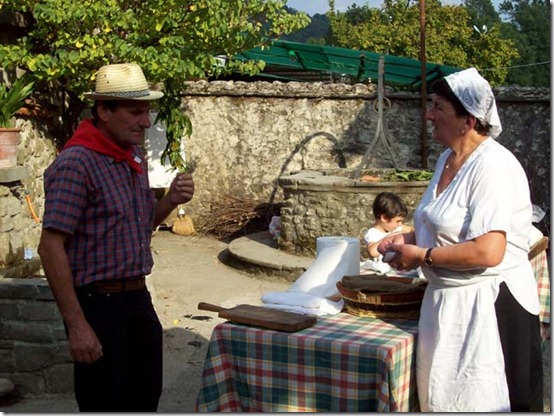
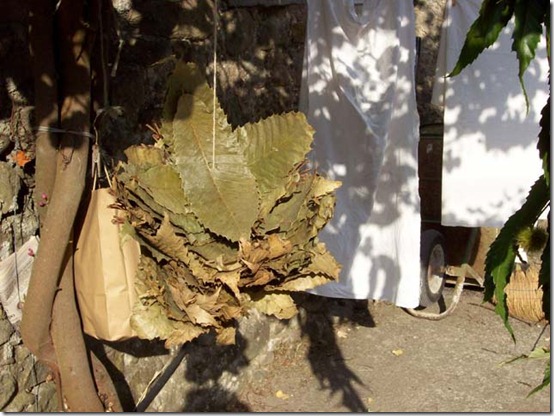
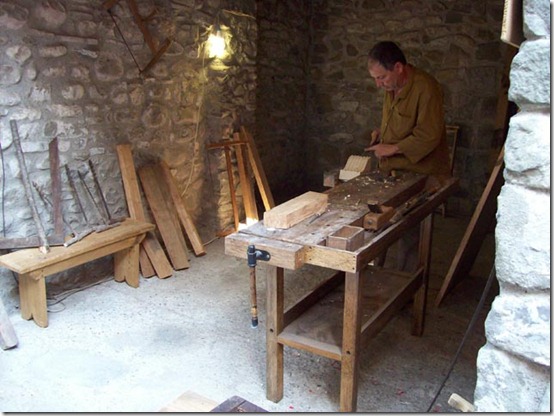
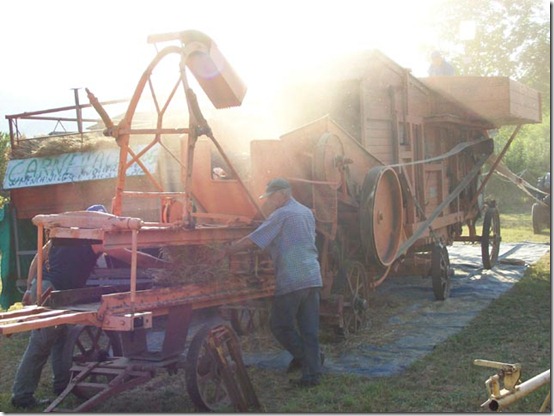
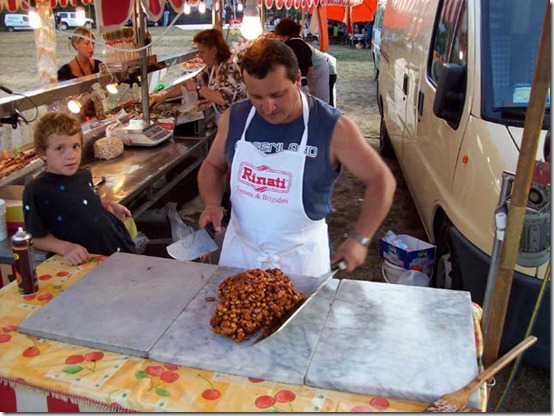

Comments:
Sal Raia:
Very well done! simple, informative and claro!!
Edoardo:
Wondeful explanation. Grazie tante, Serena